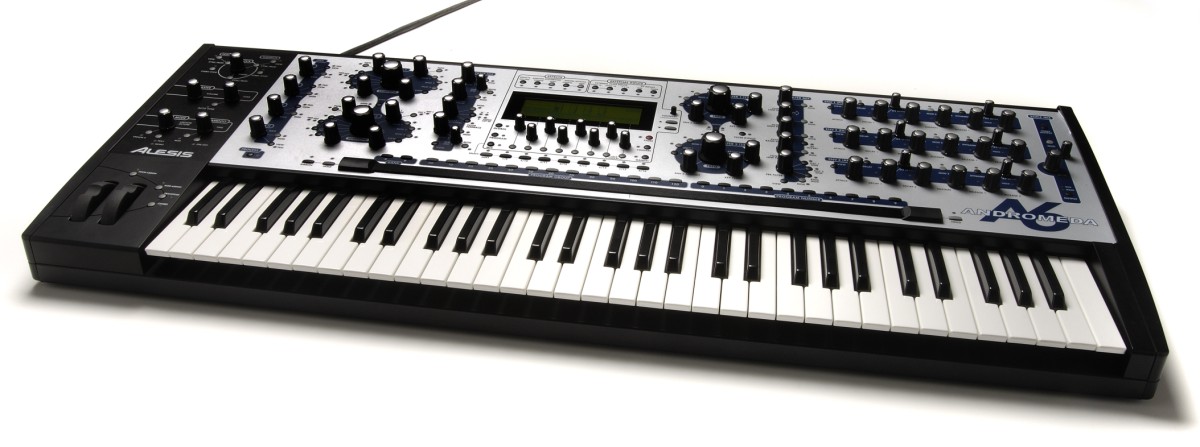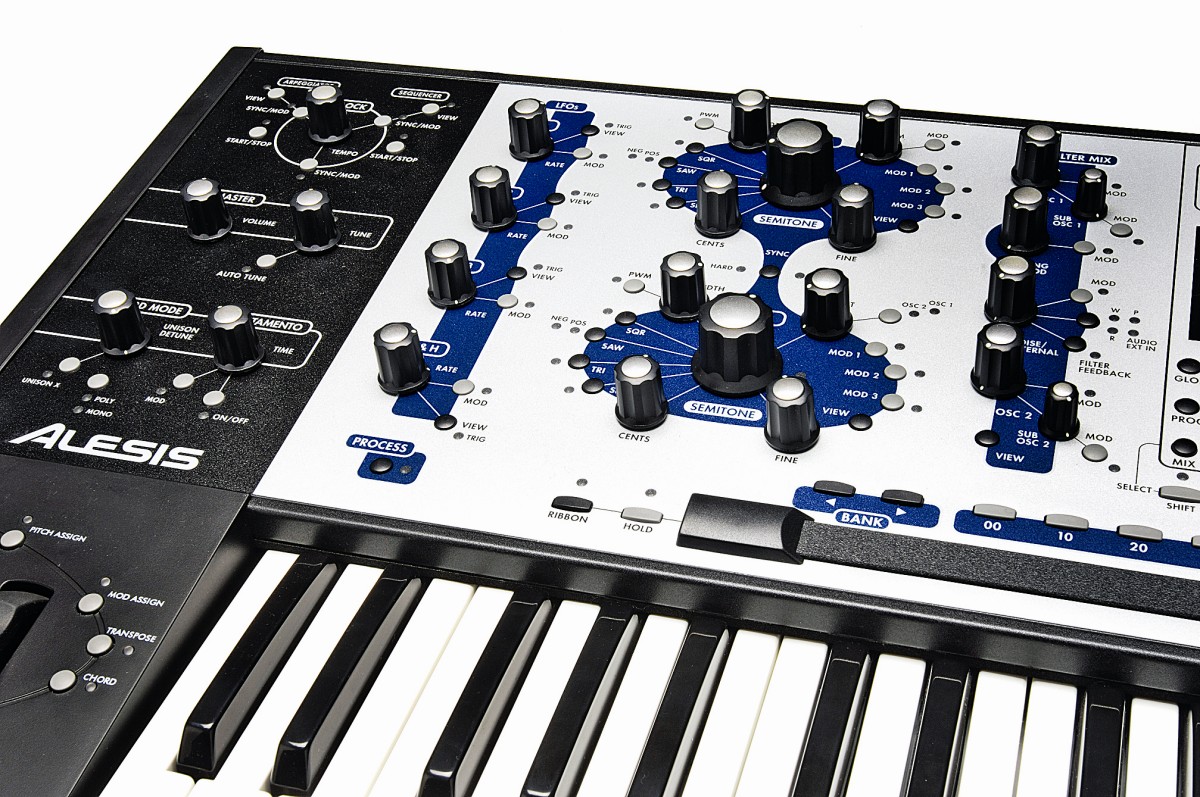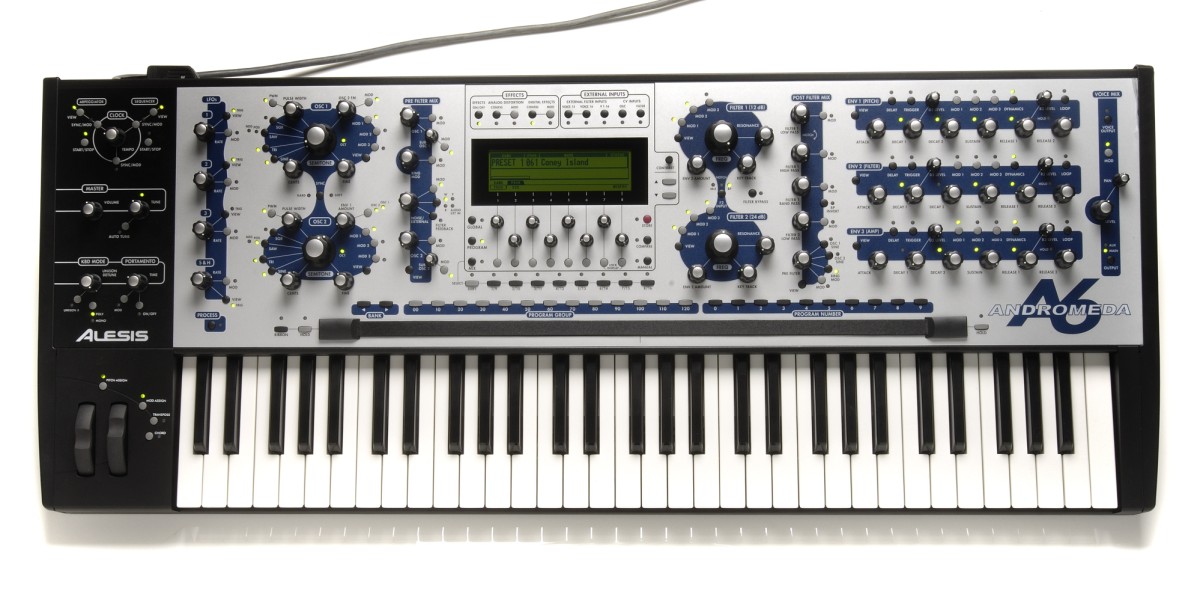MusicRadar Verdict
A heavyweight in every sense of the word. A powerful synth that deserves patience and respect.
Pros
- +
Modulation Matrix. Nice keyboard. A great workhorse.
Cons
- -
Heavy. Easy to overload internal mixer. Presets can be a little overblown.
MusicRadar's got your back

Andromeda A6

Andromeda A6

Andromeda A6

Andromeda A6
In a music world that's becoming increasingly digital, analogue is a word that's being used more and more
The phrases 'virtual analogue' and 'analogue sounding' are used so much these days they've become almost meaningless. Are claims of an anologue heritage from Alesis, a company with a long and illustrious history of digital technology, more than just a marketing ploy?
Specification
The first thing you'll notice with the Andromeda is its sheer bulk. The next thing is its weight - we could only just lift it.
Alesis claim that the Andromeda (also known as the A6) is a '16-Voice Real Analogue Synthesizer'. What you get for your money is a two-oscillator per voice synth with two filters, three envelopes, ring modulator, three LFOs and sample and tracking generators.
It's worth pointing out that while the signal path is completely analogue, the control of all these elements is handled by a Motorola Coldfire microprocessor.
The envelopes and all other modulations are done in software, but unlike some earlier designs, these are generated at 16-bit and are fast enough to compete with, or even surpass, their analogue counterparts.
Circuits
The Andromeda design team allegedly had a synth 'shoot-out' before deciding on which oscillator and filter designs to use in the Andromeda.
Want all the hottest music and gear news, reviews, deals, features and more, direct to your inbox? Sign up here.
They decided that the Moog Modular and Oberheim Four Voice were the 'best-sounding' out of a renowned field.
This led the guys at Alesis to settle on the Moog 921 VCO (voltage controlled oscillator) and the Moog 904 low-pass filter (24dB/ octave) paired with the Oberheim SEM multimode filter (12dB/octave) - both undeniable classics.
Alesis then built their own take on these circuits from discrete components (you know - resistors, capacitors and transistors) before having the designs re-engineered as integrated circuits.
Modulation
Like its Moog forebear, each VCO in the oscillator (Osc) section has sine, triangle, saw and square (pulse) waves available simultaneously.
Each waveform can be switched on and off individually, while the square wave has adjustable pulse width and level controls.
The two VCOs can be hard or soft sync'd and Osc 1 can be frequency modulated by Osc 2. The oscillators are freely tunable in semi-tones, cents and millicents (1/10th of a cent) and Envelope 1 is hardwired to VCO pitch.
The VCOs are mixed together in the Pre Filter Mix module alongside a ring modulated output, noise (white, pink, red or even an external audio signal) and sine wave sub-oscillators one octave below the fundamental.
All levels are completely variable and, once again, can be modulated in numerous ways.
Care needs to be taken with the levels though, as it's easy to overload the internal mixer if everything is turned up.
This is perhaps the price you pay for a true analogue signal path, as analogue synths can create sounds with a vast dynamic range, making it easy to use all the available headroom.
Filters
Now it's time for those filters to come into play. The Post Filter Mix module combines the various outputs from the two filters and allows Osc 1 and 2 sine wave outputs to be mixed back into the signal path to reinforce the fundamental pitch.
There's a MOD button adjoining many of the controls on the A6 and you'll discover that nearly everything can be modulated by almost everything else.
The three envelopes are all seven-stage affairs with a dazzling array of customisation parameters, and also offer looping potential that can be pressed into producing audio frequency oscillation.
The manual suggested leaving the synth on for a while before pressing the autotune button. The procedure takes about three minutes but does ensure that the synth is ready for the background and temperature tuning take over.
These can be disabled if you feel that what makes an analogue synth tick is exactly the kind of instability they are designed to negate.
Features
The presets are a little overblown in places and the true power of the unit is only discovered when you begin to program it yourself.
The digital send effects are a welcome addition but nothing special, while the Analogue Distortion is useful but lacks depth or class.
The arpeggiator could have been made more versatile too, but this is partially made up for with the 16-step sequencer, although it's a little fiddly at times.
Special mention should go to the audio inputs that can be processed through the synth engine or used as a modulation source.
Even after weeks spent with the beast we were still discovering cool tricks and foibles - the kind that you just don't get from more 'dependable', straight hardware. The Andromeda will continue to surprise and delight for years to come.
The Modulation Matrix is second to none and is only really bettered by a fully modular system. The semi-weighted keyboard is a delight to play and the front panel (although functionally and graphically alarming at first) becomes intuitive once you understand what's going on under the bonnet.
Teething issues
There were some early comments on internet forums regarding the A6 suffering tuning issues and possible VCO failure.
Alesis have pointed out that analogue chip manufacture is - by its very nature - a difficult process.
Problems such as these are something that you come to expect with true 'vintage' kit from the 70s or 80s, but not from a 'modern' synth. Virtual instruments can at least be upgraded in software, should problems be found. But with hardware that simply isn't an option.
The good news is that we didn't have any such problems with our fresh from the factory Andromeda, even after 24 hours continuous use. Later batches - of which ours was an example - have been firing on all cylinders.
Rumours of the Andromeda's demise have been exaggerated. Alesis has informed us that they'll be in production for as long as customers demand them.
It may not be a vintage Moog, Oberheim, Prophet, Korg or Roland, but the Andromeda can do much more than most of your so-called classics put together. It's a potential studio workhorse and an inspiration to play, and with a UK street price of about £1,500 this synth deserves a closer look.
Future Music is the number one magazine for today's producers. Packed with technique and technology we'll help you make great new music. All-access artist interviews, in-depth gear reviews, essential production tutorials and much more. Every marvellous monthly edition features reliable reviews of the latest and greatest hardware and software technology and techniques, unparalleled advice, in-depth interviews, sensational free samples and so much more to improve the experience and outcome of your music-making.
